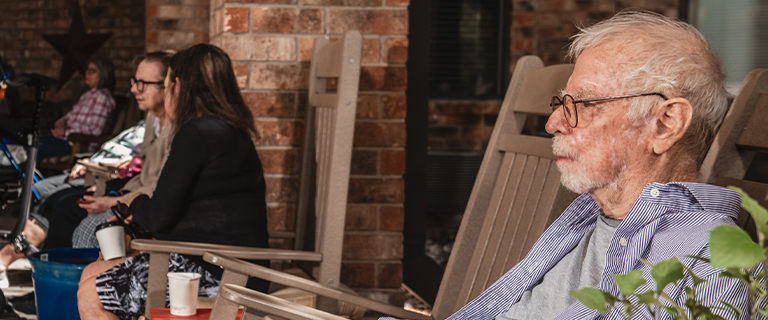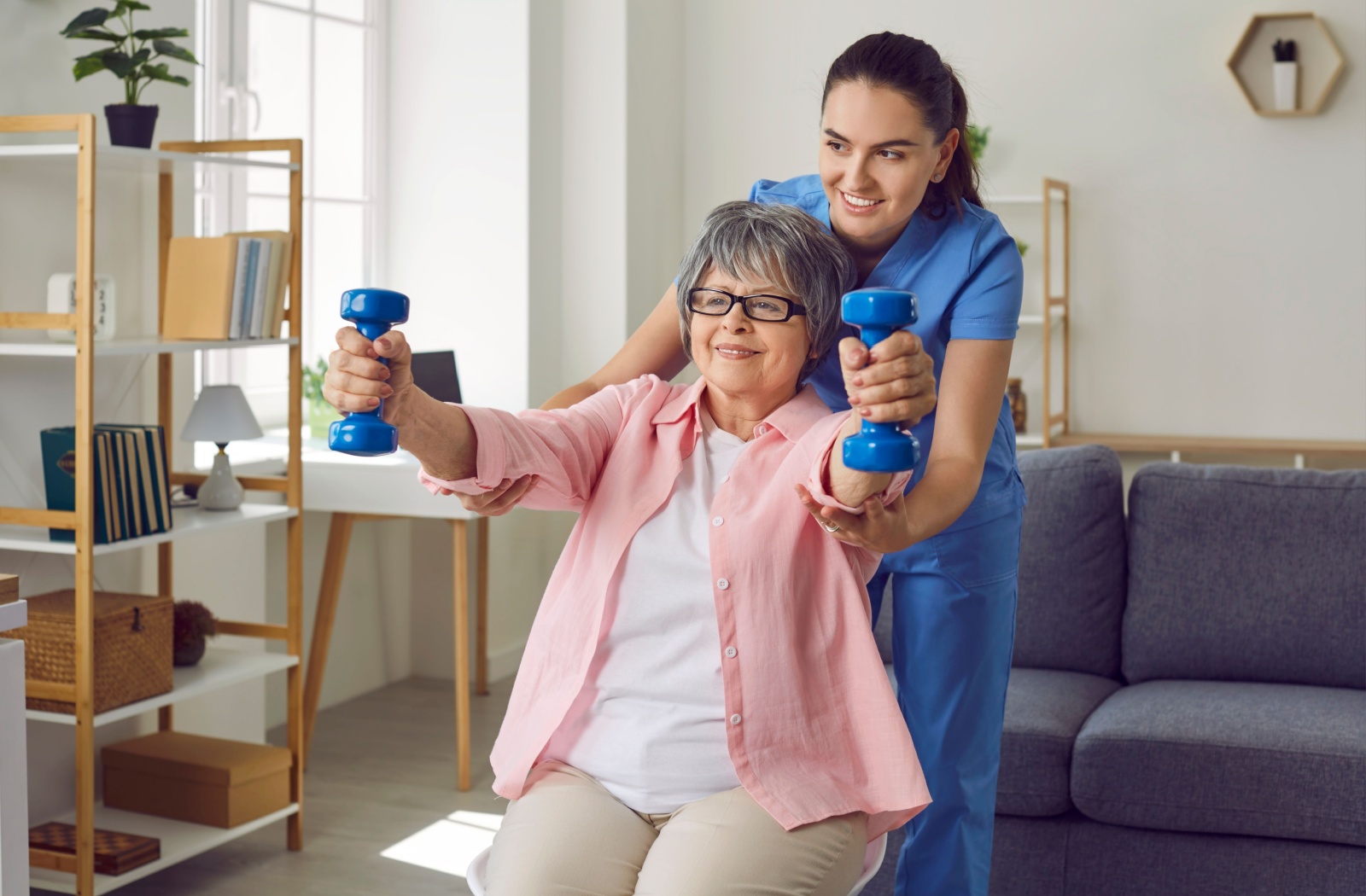Muscle mass is about much more than just aesthetics. For seniors, preserving muscle mass is crucial for preventing falls, staying mobile, and boosting one’s overall quality of life. However, age-related muscle loss is an extremely common problem. So what can you do to support a senior loved one?
If you have a senior loved one worried about lost muscle mass, there is good news—you can help. Encourage them to regularly exercise, follow a healthy diet rich in vegetables and healthy fats, and practice a healthy lifestyle. These steps can make a significant difference and help them restore their lost muscle mass.
Why Do Seniors Lose Muscle Mass?
Sarcopenia is the term used to describe the age-related loss of muscle mass and strength. It’s a common condition that affects many seniors, usually becoming noticeable around the age of 50 or so. It’s believed that, after middle age, people lose roughly 3-5% of their muscle strength and mass every year, with this number increasing after the age of 60.
Sarcopenia is a common problem, but it’s not the only reason why muscle mass decreases with age. Several other potential factors include:
- A lack of exercise: Regular physical activity helps maintain muscle mass, but many seniors become less active due to health issues or lifestyle changes.
- Poor diet: Inadequate protein intake and poor nutrition can accelerate muscle loss, making it harder to rebuild strength.
- Mobility problems: Joint pain, arthritis, and other mobility issues can limit physical activity, leading to further muscle decline.
This loss of muscle mass can be a serious problem, and it can negatively affect your loved one’s life.
The Risks of Low Muscle Mass for Seniors
There can be serious consequences for seniors living with low muscle mass. Muscle loss affects their health and their ability to stay independent, which can be worrying for both them and their loved ones. Some potential risks of low muscle mass include:
- Falls: With less muscle mass, seniors are at a higher risk of falls and fractures, leading to further loss of mobility.
- Decreased strength and endurance: Reduced muscle mass also means reduced strength and stamina, making everyday tasks more challenging.
- Difficulty managing chronic conditions: Conditions like osteoporosis, diabetes, and heart disease may worsen with decreased muscle mass.
While the effects of age-related muscle loss can be concerning, there is good news. It’s never too late to take action and help your senior loved one regain their lost strength.
How Seniors Can Boost Muscle Mass
Increasing muscle mass can be an excellent way to boost your loved one’s quality of life. A well-rounded approach is key to helping them regain their strength.
There are 3 key steps here:
- Physical exercise
- Diet and nutrition
- Lifestyle changes
So how can you help?

Physical Exercise
When trying to help a senior loved one boost their muscle mass, the first place to look is their fitness and exercise habits. An active lifestyle is key to physical health, so try to encourage your loved one to try:
- Endurance and cardiovascular training: Activities like walking, swimming, or cycling are great for building endurance and can be adapted to suit any level of fitness.
- Strength training: Exercises that target specific muscle groups, such as weightlifting or resistance band exercises, can help rebuild lost muscle mass.
- Flexibility and balance training: These exercises, like yoga or tai chi, can improve flexibility and reduce the risk of falls for seniors while improving the muscles needed for balance.
It’s recommended by the CDC that older adults get at least 150 minutes of low-to-moderate-impact exercise, or at least 75 minutes of high-impact exercise, every week. Regular balance and strength exercises are key as well, so encourage your loved one to get up and start moving! It’s a great way to nurture their personal growth.
Diet and Nutrition
A healthy diet is the foundation of a healthy lifestyle, but it’s all too easy to fall into poor dietary habits. Try to encourage your loved one to include more fruits and vegetables into their diet, alongside:
- Sources of healthy fats like avocados and nuts
- Whole grains
- Lean proteins like fish and chicken
It also helps to visit a healthcare professional to discuss supplements. These changes are small, but they can have a big effect.
Lifestyle Changes
Finally, lifestyle changes can also make a big difference in boosting muscle mass for seniors. Encourage them to:
- Get enough sleep, as adequate rest is crucial for repairing and rebuilding muscles.
- Reduce stress, as it can inflame the muscles.
- Stay hydrated, as dehydration can cause fatigue and muscle weakness.
Though it takes time and effort, these strategies are key to helping your loved one boost their muscle mass. Remember—a healthy lifestyle is a journey, not a destination, and by supporting your loved one in this process, you can make a difference.
A Healthy & Supported Life
With a well-rounded approach, your senior loved one can work towards boosting their muscle mass and living a healthier lifestyle. At Parsons House Austin, we can help nurture your loved one’s personal growth each and every day. That’s why we offer access to fitness programs, a yoga studio, exercise classes, and more!
In our community, we believe in serving our elders. We’re ready to support your loved one every day in their journey, so book a tour with us today, and visit our website for more information!



